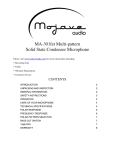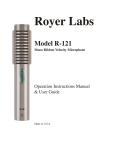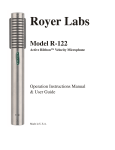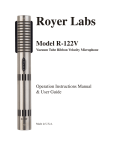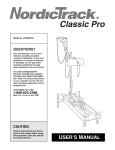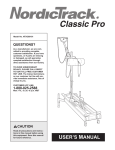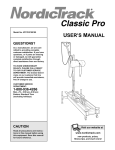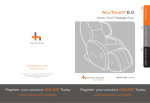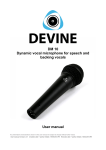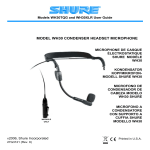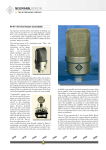Transcript
neumann.berlin the microphone company U 67 - The Workhorse The news came as a shock to Neumann at the end of the 1950s, when the German electronics firm Telefunken told Neumann, that because it was the only remaining buyer of its steel tube VF 14 M, further production of the tube was no longer profitable for the company. After one last lot was produced, the volume of which Neumann could decide, the tube’s production ceased forever. With this announcement the end of the world-renowned Neumann U 47 microphone drew near. At a time, when thousands of U 47 were in use worldwide, Neumann began to intensify its development of a successor. The company had already been producing the KM 56 miniature microphone for a few years. That microphone featured selection of all three major directional patterns: omni directional, cardioid and figure-eight. Neumann wanted its new model at least to have these switchable functions. As for directionality, the legendary Neumann M 7 capsule made it relatively simple to realize both the cardioid and omni directional pickup patterns. However, an exact figureeight characteristic posed more of a challenge, because the dual diaphragm in the M 7 shares a common central electrode. The accuracy of a bi-directional pickup depends on the precise correlation of the two capsule halves. This problem led to the development of a similar dual capsule, but with two separate back electrodes. In addition to the ability to match the two halves exactly, it also become possible for this capsule to respond optimally for all three patterns. The result is the K 67 capsule, scheduled to be employed in the successor to the U 47. In the 1950s, it had become fashionable for many popular vocalists to sing almost directly into the microphone. This practice produces a noticeable increase in low frequency response due to the so called proximity effect. Through this, the voice gains volume at low frequencies and sounds fuller. Too much bass, though, can be a problem, and to counter it, a switchable circuit was designed to „roll-off“ low frequencies. A switch located on the microphone head permits changing the low frequency attenuation to become effective at 100 Hz for proximity compensation. The EF 86 tube operates as triode in an anode amplifier configuration into an output transformer with separate feedback windings. The output transformer’s special construction helps to eliminate hum and allows internal impedance matching with the following preamplifier. Finally, in 1960, the new microphone was born, which ultimately matured to become the Neumann U 67. Its form is a variation of the typical cone-shaped microphone. It can easily be disassembled without tools and incorporates all the above mentioned features. The prototype series was released as the U 60 to select recording studios for testing. It was renamed U 67 with the start of its market introduction, to honor its renowned predecessor and providing continuity with the U 47. The U 67 quickly gained a reputation for its unprecedented versatility, making it the ideal microphone for universal applications. The Neumann U 67 became known as a true workhorse for professional recording studios everywhere. Several thousand were sold in the first five years of its production, and as the U 67 gained in popularity, the U 47 declined. An era ended when the last U 47 was delivered in 1965, with the U 67 having taken the market by storm and firmly established as the legitimate successor. Especially in the US, this microphone had become so well known that our sales reps there were able to release an effective ad with only a picture of the U 67 and the words, „ask anyone“. The understatement was enough. Owing to its quality, versatility and shape, the Neumann U 67 became the very symbol of a high quality microphone, often imitated, but never duplicated.
